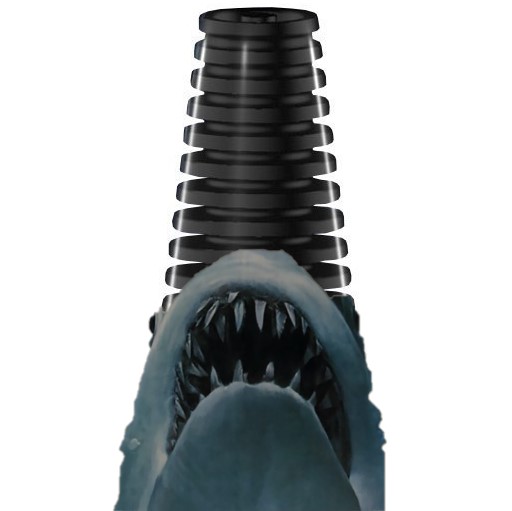Title reads like at ad, but this is a new way to reach energy independence. I actually have a small EcoFlow device and it’s pretty good for the price.
I hope this tech can be made available in the US soon.
I would, but i’m not allowed by the HOA the hang shit on my balcony.
Fuck’n HOA assholes.
My balcony is also on the right side of the building too, it would be perfect.
Vote.
I ran my small HOA for 1 term and people came at me, bitched about stuff and I got them to come to a meeting where the other homeowners could express their concerns about the proposal and we’d come to an agreement and write up a change. It was no big deal. We even negotiated group rates for shared services and made it so that the costs of the HOA were offset by the savings from the services.
On the other side of the coin, when I left my position to give somebody else a turn at the process I largely automated, they ran it into the ground and bankrupted it while chasing a personal grievance against the city.
Somehow, the HOA attracts power hungry nobodies but they can be voted out if you’re willing to work at it. Also, talk to your neighbors. My guess is that there are others who would back your proposal.
I can’t really find any info regarding renters when it comes to these hoa things or being allowed to partake in a meeting, but i would assume they could care less about a renters opinion unless it benefits them.
I can’t afford to be a homeowner.
I’m sorry to hear that. I remember renting and the feeling of having no control over the whims of the landlord.
Aren’t you supposed to be the land of the free?
That’s just what our fascist oppressors tell us.
HOAholes
Worst Santa.
Plug-in systems are built around a microinverter that feeds solar energy back into the home via a standard wall jack.
What the actual fuck?
The PowerStream has three proprietary ports: one that connects to your MC4 solar panels
Disqualified.
Plug-in systems are built around a microinverter that feeds solar energy back into the home via a standard wall jack.
What the actual fuck?
What’s wrong with that? That’s how basically any balcony solar system works.
The cables in your walls are designed for a certain maximum current before they start to heat up. This current is limited by your breaker.
Now if you introduce a plug in solar setup your current is limited by your maximum breaker capacity + whatever your solar setup can generate.
So if I’d use the specs from the article and apply it to a normal dutch home situation: 16A breaker, + 800W at 230V, which means ~3.5A = 19.5A max. which is probably still fine for short durations.
But now some genius doesn’t read the fine print and hooks up 2 or 3 on the same circuit. There is no electrician that tells him that’s dangerous because it’s all self installed and he doesn’t know any better. And all of a sudden you are up to 26.5A and you got glowing, smoking wires in your walls…
But now some genius doesn’t read the fine print and hooks up 2 or 3 on the same circuit. There is no electrician that tells him that’s dangerous because it’s all self installed and he doesn’t know any better. And all of a sudden you are up to 26.5A and you got glowing, smoking wires in your walls…
Ok sure, that makes sense. This might actually be an issue.
Your breaker will pop. Just like if you were to run a hair dryer on each outlet.
The breaker only sees the current flowing through the breaker though. Not the additional current provided by the solar panels since those don’t flow through the breaker. So it will pop later then that the cables are rated for, therefore introducing an overheat and fire hazard.
Maybe for a same-circuit device that’s consuming more than the breaker can provide? I don’t know enough about this tech but would expect this can be accounted for in some way.
There are ways to somewhat fix it for circuits with a single use.
Fixing the same example: A 16A breaker for the solar feed in, a single 16A breaker for all the consuming appliances on that circuit. And another 16A breaker on the feed in for that circuit is an example that is sometimes used in the Netherlands to add a feed in to an existing circuit with a single outlet connected to it. Meant for washingmachines for instance.
This ensures that the circuit on all circumstances has a maximum current of 16A flowing over any wire by also measuring the outgoing current of both feed in circuits. But if you have multiple outlets you’d still need to stiol measure at a single place or use low enough breakers per outlet that the total stays below the 16A. Which the UK might have if I recall correctly.
Then again this is not a normal setup and requires change in the electric circuit of the home. Which most consumers won’t even realize. Like I said, if everyone keeps to the fine print this thing probably has and limits the extra plug-in solar panels to 1 per circuit, it’s unlikely to actually cause issues because of overdimensioning of the wires. And the safety margin built in which is likely how they have gotten approval. But ignoring or not reading that text and plugging multiple in on the same circuit can and will cause a fire hazard with heavy consumers on the same circuit.
Also, emergency service hazard. The PV won’t turn off if firefighters take out the mains, which makes a house potentially inaccessible during an emergency.
Surprisingly, no. Most inverters in the EU must come with island protection. Meaning that if there is no AC from the grid it immediatly switches off the inverter or the battery, there is no stand alone operation.
There are some systems that allow it but they are rare here and require the mains side to be fed trough the inverter itsself ensuring it’s never back feeding into the grid when there is no power with the same island protection, or less commonly there is a transfer switch of some kind also eliminating the issue. And either should obviously have a main kill switch on the breaker board for emergencies that also switches off the in home power with 1 action.
But most importantly, either of those options is not plug and play and will require an electrician that hopefully does know what he’s doing.
Does the island protection with if you have two inverters running independently? (legally or not)
Yep, I’m not exactly sure on the technical details but it works with multiple inverters. Otherwise having a street full with solar panels on every roof would still be a hazard if the power went out at a distribution junction for said street and repairs would have to be made.
If there is no powerplant feeding some energy, all inverters should shut off. Fixed installs and plug and play variants alike. I’m actually amazed that there are parts in the world where this isn’t common.
Yes, because the frequency of the grid is also a trigger for shutting off the inverter. Inverters generate a frequency which indicates a “non healthy grid” that trigger the shutoff of connected inverters.
I looked into these before and believe the inverters shut off if the mains shuts off. The DC side of the circuit would still be potentially dangerous though.
The inverters need there to be power in the mains circuit because they convert DC to AC and match the phase of the AC power they are generating to the mains supply.
First part is classic stuff right?
Should not be via a standard wall jack. As far as I know.
Depends on electrical code which depends on, most of all, your standard plugs. In Germany Schuko is deemed non-optimal, but acceptable, for up to 800W.
…no issues regarding exposed prongs, if the inverter doesn’t see AC to sync to it doesn’t output anything. It’s not a dumb spinny magnet generator we’re talking about here.
Most people don’t have an outlet on their balcony, though, and weather-proofing the thing is an issue in any case so while you’re at it you can just as well put in a proper Wieland outlet. 20 bucks or so, the expensive part will be the electrician not the outlet.
In Germany Schuko is deemed non-optimal, but acceptable, for up to 800W.
In the UK our everyday plug is rated for 13A - nearly 3KW. The plug on my phone charger is the same as the one on my tumble dryer and I don’t know if that’s a good thing or a bag thing.
Schuko is rated for 16A continuous for one hour, 3680W, I think the UK plug would actually take quite a bit more you’re just being conservative. Or something odd about ring circuits I don’t want to think about.
In any case practically nothing in a household actually uses 3kW. A stove, yes, but that’s connected to three phases and without a plug (usually 3x20A over here – CEE plugs can do that but they’re chonkers and how often do you move your stove). Newer dryers should stay under 1kW, the standard high load appliances are kettles and hair dryers.
If it has anti islanding at least it’s unlikely to be a shock hazard.
That said are there any other concerns I’m missing?
You don’t want to be sending current up into the grid while workers are repairing it during a power outage. If you just plug some shit into your bedroom outlet, that will happen. You need to disconnect your house from the mains. Whole house generators are old news, but no, your bedroom wall plug isn’t rated to power your whole house, and no, you aren’t just electrifying your own wiring if you try to do so. Whole house generators aren’t hard but they aren’t this easy. And you should be suspicious at how magically simple it sounds to just plug a dynamo into your wall to power everything. It’s the kind of thing we would love to be true because it’s so elegant but there’s a little more to it.
That’s what anti islanding is.
Prevents power from going into the grid when it’s down.
Way I read it is it puts surplus into the grid to keep you elec bills down.
800 watts isn’t exactly going to set an outlet on fire.
I’m also against proprietary systems but is there an open alternative?
Disqualified.
Why?
Because proprietary.
You realise it’s new tech and probably needs a proprietary connection?
Did you disqualify ebikes too when they appeared?
LOL, no, pretty much nothing ever “needs” a proprietary connection these days. Certainly not a fucking plain old power connection for a solar panel!
It’s not just for the panel though, it’s for switching between feeding an outlet and supplying an appliance, looks pretty intelligent to me
But I live in the EU, if they make it proprietary for no reason, they’ll get told to fuck off rather quickly 😂
There are a TON of standardized power connectors available that enable compatibility with off-the-shelf parts. Seriously, just look on Mouser or DigiKey. The only reason for proprietary connectors in this case is to try to obtain vendor lock-in.
Yeah, non-USA for this atm, as much fun as it would be to plug such a system into an apartment.
I believe that the US requires that a direct-feed system has to plug into a physical kill switch setup to prevent back-feed of power during an outage.
Still pretty neat, though!
Same for the EU.
Solar inverters also need to follow the grid frequency
They don’t follow the grid frequency because the EU or US regulations require it, they follow the grid frequency because physics demands it.
In this house we obey Ohm’s law!
deleted by creator
Interesting - which other generators for example wouldn’t you want starting up?
deleted by creator
I think I get that, thanks. So an Island grid is less stable and could cause itself damage if two microinverters say are trying to sync up to each other vs a beefy, stable main grid?
So how does a backup battery system work when islanded? Typically also at 52Hz?
Or can it go into a 60Hz beefy mode?
It would be nice to get all the little island solar inverters working when the grid goes down!
I’m guessing the commenter above is in the EU and operating at 50Hz normally, so running at 60Hz wouldn’t be a great idea. A backup battery and such operate in the same way when islanding.
deleted by creator
These systems automatically turn themselves off during an outage.
That’s great, but it doesn’t matter unless it has the physical cutoff that’s required to bring that kind of system up to the current electrical code for such a system.
they have relays (well, most of them. looking at you, Deye), so it should be fine
Physical shutoff via relays is required by the standard. We’ve just been through a scandal where a manufacturer skimped out on putting them in and had to recall the devices.
According to the article this system also detects power outages and shuts off when they happen. Just like full-scale solar power systems. But yeah, no physical kill switch.
I hate technologies that limit cannot use with another manufacturer’s battery". Smells monopoly.
Wow that’s interesting. I hate how much power my pool eats up in the summer, I’ve been looking for something economical to help run it off of clean energy since the pump runs during peak solar hours anyway.
You can do that today with their setup I think. You would need to plug the pump into one of their batteries and run their solar panel to the battery. You’d also put the battery on grid power.
The article is focused on an inverter that pushes energy back to the grid, something we don’t have yet at this market level.
If you just need the energy for the pool, a small setup without battery is all you need. Saves you half the price. Panels and inverters are around 900€ in Germany. Putting a battery on it makes another 1,200€ and it makes sense only, if you need power in the evening.
Just get solar then. Seems like the solution you are looking for, no?
Yeah, but between federal and state credits, different types of systems, etc. I’ve had a hard time determining what makes the most sense for me. Doesn’t help that trying to do online research quickly funnels you into sales bs.
it’s astonishing how many people in !technology@lemmy.world don’t know anything about this technology
Reading this I kept thinking “How have I not heard of this?” and then I discovered it’s because this sort of setup isn’t possible in the US.
Most European residential electric systems operate at 240v, versus 120v in the US, which means you can only backfeed a US outlet with half the power you could in a European outlet. That alone makes this system half as useful for US applications.
If one of these were made for the US market it would obviously be configured to work at the US mains voltage and frequency. (Europe is 50hz, US is 60).
Your home’s power input is also 240 volts in the US, regardless of being split into two 120 volt rails at the breaker box. It would be trivial to hook up a 240 volt system if you really wanted to, albeit not through one of your regular 5-15/5-20 outlets. You’d have to do it via a dryer outlet or something.
Watts are watts. If the unit is capable of feeding 800 watts into your home’s electrical system, the voltage is irrelevant provided it can supply sufficient amps. A normal US household circuit is 15 amps, so a hypothetical US version of this thing would have to supply ~6-2/3 amps at 120v rather than ~3-1/3 amps at 240v. No big deal. It’s not even close to maxing out a single residential circuit on either continent.
Just to expand, here’s a list of typical 240V appliances in a typical American home:
- Furnace/Heat Pump
- Air Conditioning
- Electric Range/Stove
- Electric clothes Dryer
And some homes have:
- Hot Tub/Spa
Don’t conflate 120V/15A standard outlets with not having 240V at all. All homes have 240V or high power appliances wouldn’t function.
Just want to post a pic of a 20a 220v US outlet for those who don’t know about it.
It fits in a standard box, so you don’t have to use a dryer plug if someone wanted to feed power back in through a outlet. (Of course with a device designed to feed in safely.)

Amazing how confidently incorrect you are. =)
Why is there always at least one European in these threads misunderstanding how North American power works?
Except he’s probably American or Canadian. Look at his profile.










